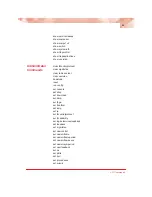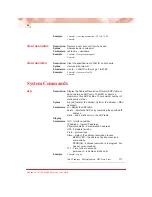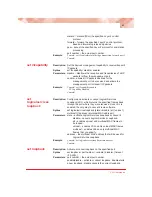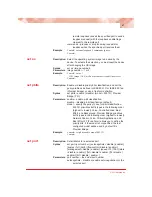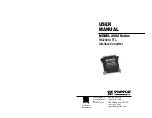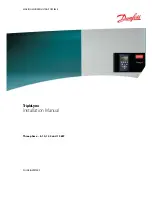
63
CLI Commands
discard – discard (filter) the specified Layer 2 control
protocol.
forward – forward the specified Layer 2 control protocol,
based on forwarding rules and policies.
peer – accept the specified Layer 2 protocol for end-station
processing.
port number – the actual port number.
Example
:
Console> set l2controlprotocol bridge disposition forward port 1
Console>
set l3capability
Description
: Set the device’s management capability to receive/transmit
IP packets.
Syntax
:
set l3capability <disable | enable>
Parameters
: disable – disallows the reception and transmission of all IP
packets to/from the management port.
enable – allows all IP packets destined for the
management port to be received and allows the
management port to transmit IP packets.
Example
:
Console> set l3capability enable
IP Capability Enabled
Console>
set
logicalservices
loopback
Description
: Configure and activate or cancel Logical Services
Loopback (LSL), which returns the specified frames back
through the port where they were received. Once LSL is
enabled, the only way to cancel it is via software.
Syntax
:
set logicalservicesloopback [state <disable | all | unicast |
multicast>] [address <multicast MAC address>]
Parameters
: state – activate Logical Services Loopback or cancel it.
disable – cancels Logical Services Loopback.
all – enables unicast and multicast MAC frames to
be looped.
unicast – enables LSL on only unicast MAC frames.
multicast – enables LSL on only multicast MAC
frames that you specify.
address – the multicast MAC address that will be used for
Logical Services Loopback.
Example
:
Console> set logicalservicesloopback state unicast
Console>
set loopback
Description
: Activate or cancel loopback on the specified port.
Syntax
:
set loopback <port number> <enable | disable> [timeout
<30-300>]
Parameters
: port number – the actual port number.
enable|disable – activate or cancel loopback. Enable starts
a new loopback; disable cancels the current loopback.





